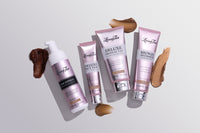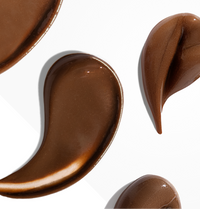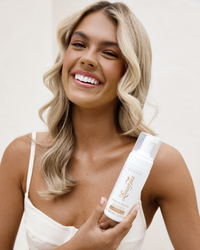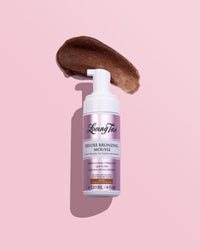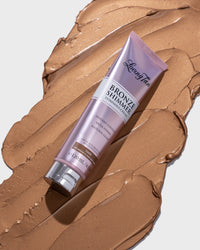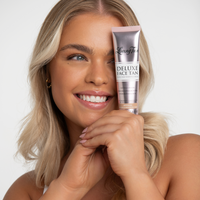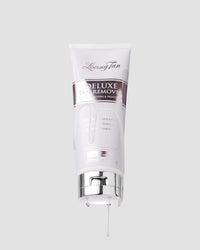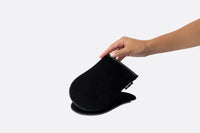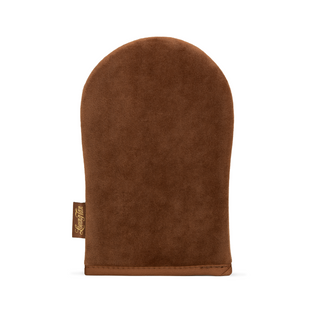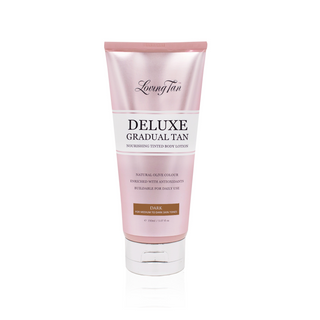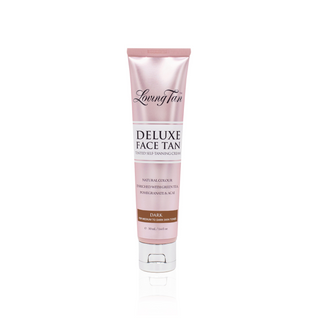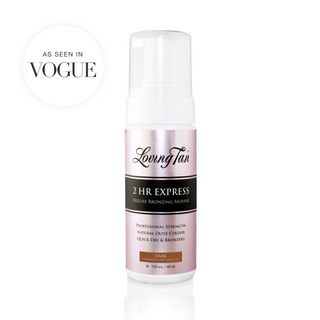Curious to understand how self tanner works on your skin? We asked Dr Natasha Cook MBBS (Hons) FACD, a board-certified specialist dermatologist with decades of experience to answer all the top questions we receive from you, our customers.
How does self-tan work on your skin?
Self-tanning utilises dihydroxyacetone (DHA) as an active ingredient, to produce a temporary staining of the skin. DHA is a 3-carbon sugar that interacts with the protein-rich stratum corneum to produce melanoidins (oxidation of the DHA), which are brown chromophores, temporarily darkened to mimic a sun-kissed glow. Remember, as your skin cells shed, so will the self-tan.
What are the benefits of using self-tan vs sun tanning or a tanning bed?
Firstly, there is no such thing as a safe UV tan. The reddening or browning of skin with sun exposure is a sign of skin damage!
Self-tanning is a method of safely simulating the appearance of a tan all year round without UV sun damage so it’s a yes from me.

If you have sensitive skin what should you look for or look to avoid in a self tan product?
Taking care of sensitive skin prior, during and after self-tanning should be top priority. Due to high levels of DHA found in most self-tan products, skin can become dehydrated and unhappy. That is DHA can dehydrate the skin! This is why it’s important to moisturise your skin daily, all year round (that’s the face AND body) and especially in between self-tanning days. Therefore, avoid foaming washes that will further dry out the skin and make sure you moisturise up 2x daily with body moisturiser that contains good humectants and emollients like glycerin and shea butter.
|
"Self-tanning is a method of safely simulating the appearance of a tan all year round without UV sun damage, so it's a yes from me."
DR NATASHA COOK MBBS (HONS) FACD
|
 |
What is your best piece of advice to look after your skin?
SPF is your BFF! Always apply a SPF greater than 30 and preferably one which is mineral only, has antioxidants like B3 Niacinamide and protects against UVA UVB, visible light, infrared and environmental pollutions. All of this can be found in my FaceShield True 50. Designed for sensitive skin as it is chemical filter free and absorbs
Also, future proof your skin! Early intervention is prevention and I encourage a proactive approach with all things skin. I recommend a laser and energy-based device treatment at least once every 6 months to help boost collagen production and elastin levels.
With epidermal love, Dr NC xo
| As a board-certified specialist dermatologist registered with the Australia College of Dermatology, Dr Natasha Cook empowers her patients to become the best version of themselves and has developed a keen interest in solving Australia's unique dermatological challenges. |  |
